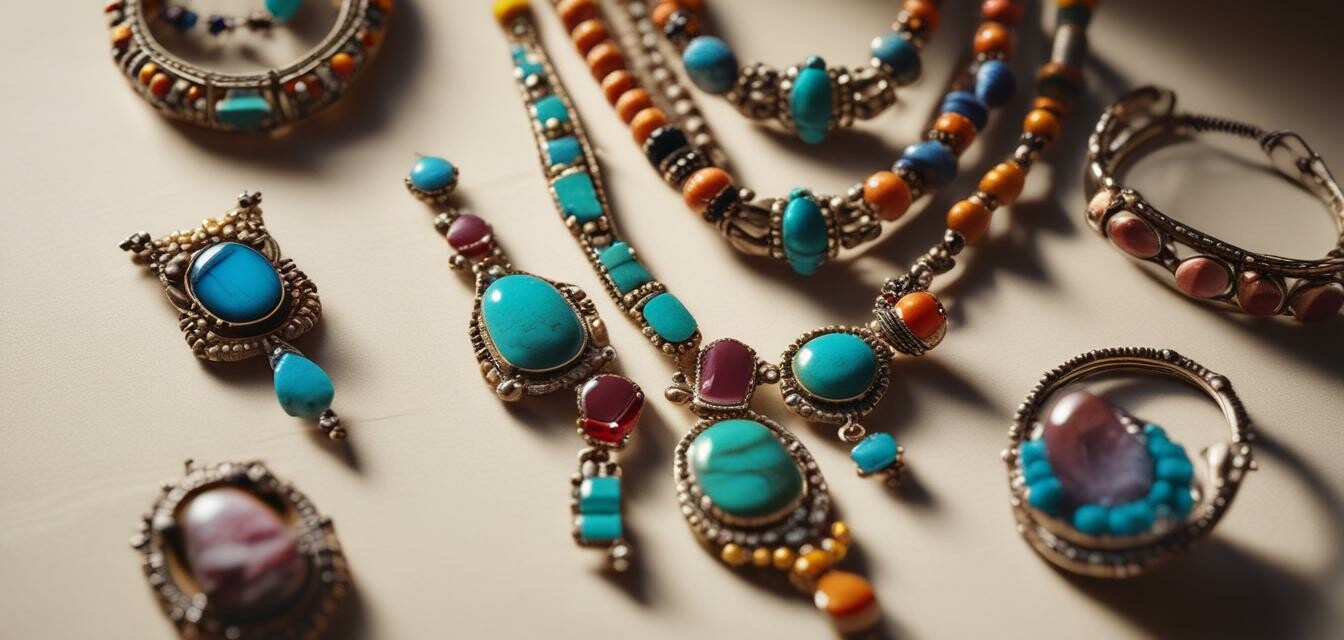
Amplifying Indigenous Voices in Jewelry Making
Key Takeaways
- Indigenous practices play a crucial role in sustainable jewelry making.
- Increasing visibility for indigenous artisans can lead to greater appreciation and support for their crafts.
- Collaborative efforts between indigenous creators and the broader jewelry industry foster sustainability.
- Ethical sourcing of materials is vital for preserving cultural heritage and the environment.
In recent years, there has been a growing movement to celebrate and amplify indigenous voices in the world of jewelry making. This encompasses not only the craftsmanship involved but also the sustainable practices that these artisans embody. By embracing ethical sourcing and unique designs rooted in cultural heritage, indigenous artisans are proving that jewelry making can be both beautiful and responsible.
The significance of indigenous practices in jewelry making
Jewelry making is an age-old tradition that resonates deeply within various cultures, particularly among indigenous communities. These practices often hold spiritual significance and reflect the connection to the land and environment. The following are vital aspects of how indigenous practices enhance sustainable jewelry making:
- Cultural storytelling: Each piece carries stories, traditions, and the identity of the maker, giving each item unique value.
- Material sourcing: Indigenous artisans utilize locally sourced materials, ensuring minimal environmental impact.
- Techniques and skills: Many jewelry-making techniques are handed down through generations, reflecting a deep understanding of local ecosystems.
Collaborative efforts for greater visibility
Collaboration between indigenous artisans and the larger jewelry market is essential for amplifying their voices. Here are some ways this collaboration is fostering sustainability:
| Collaboration Type | Benefits |
|---|---|
| Partnerships with Ethical Brands | Support for fair trade practices that ensure artisans are compensated fairly while promoting sustainability. |
| Educational Programs | Sharing knowledge on sustainable practices and the importance of preserving cultural heritage. |
| Community Initiatives | Creating opportunities for local artisans to showcase their work in markets and exhibitions. |
Ethical sourcing of materials
Ethical sourcing is vital for the sustainability of indigenous jewelry making. This involves not only selecting materials that are eco-friendly but also respecting the rights and traditions of indigenous communities. Here are some important aspects of ethical sourcing:
- Natural gemstones: Many artisans use responsibly sourced gemstones that align with environmental conservation efforts.
- Recycled materials: Utilizing upcycled materials not only reduces waste but also brings new life to discarded items.
- Fair-trade agreements: Engaging in agreements that ensure fair compensation and labor practices for all involved.
Understanding certifications
Various certifications can help consumers identify sustainable jewelry practices. Here’s a quick overview of the most recognized certifications:
| Certification | Description |
|---|---|
| Fair Trade | Guarantees that artisans receive fair wages and work in safe conditions. |
| Responsible Jewelry Council | Aims to promote responsible sourcing and sustainable practices within the jewelry industry. |
| EcoCert | Focuses on sustainability and ethical sourcing in the production process. |
Why support indigenous artisans?
Supporting indigenous artisans is crucial for fostering cultural diversity and promoting sustainability in the jewelry industry. Here are a few reasons to consider:
- Cultural preservation: Investing in indigenous crafts helps preserve unique cultural identities and traditions.
- Community empowerment: Providing artisans with a platform leads to economic independence and growth within their communities.
- Environmental conservation: Many indigenous practices emphasize the careful and respectful use of natural resources.
Pros
- Promotes cultural awareness and appreciation.
- Supports sustainable practices that lower environmental impact.
- Encourages fair trade and economic empowerment for indigenous communities.
Cons
- Potential issues with misrepresentation if artisans are not adequately credited.
- Challenges in scaling production while maintaining traditional practices.
Join the movement
As consumers, we have the power to support sustainable and ethical jewelry making by choosing to purchase from indigenous artisans. This not only helps preserve unique crafts but also contributes to a healthier planet. Explore our collection of ethical stone earrings and consider making future purchases that prioritize sustainability.
Conclusion
Amplifying indigenous voices in jewelry making is not just about showcasing beautiful pieces; it's about understanding and honoring the stories behind them. By supporting these artisans, we contribute to a sustainable future and protect the rich cultural heritage they represent. Whenever you’re looking to purchase jewelry, remember the impact of your choices and how they can help create a better world for all.